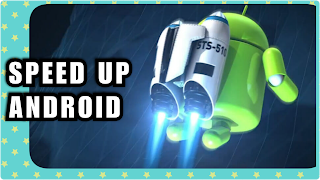How to make your Android Device Faster With Animation Scale
If you've been using an Android device for a while, you might have noticed that it can sometimes feel slow or unresponsive. This can be frustrating, especially if you're trying to get things done quickly. One way to improve the performance of your Android device is by reducing the animation scale.
What are animations on Android?
Animations are the visual effects that occur when you interact with your Android device. For example, when you tap on an app icon, there's an animation that shows the app opening. When you swipe between home screens, there's an animation that shows the transition between screens.
How do animations affect performance?
Animations can make your Android device look more polished and professional, but they can also slow down the device's performance. This is because the device has to render each animation, which takes up processing power and can cause lag or stuttering.
How to reduce animation scale on Android?
Reducing the animation scale can help speed up your Android device. Here are the steps to do it:
1. Enable Developer options.
Go to your device's Settings app, scroll down to "About phone" or "About device", and tap on "Build number" repeatedly until it says "You are now a developer".
2. Access Developer options.
Go back to the main Settings menu and scroll down to find "Developer options" (it may be hidden under "System").
3. Adjust animation scale.
Tap on "Developer options" and scroll down to find the "Window animation scale", "Transition animation scale", and "Animator duration scale" settings. Tap on each of these settings and change the value to "0.5x" or "off".
4. Exit Developer option.
Exit the Developer options menu and check if your device feels faster.
Alternative to speed up your Android device:
Reducing animation scale is just one way to speed up your Android device. Here are some other tips you can try:
1. Remove unused apps:
Uninstall any apps that you no longer use. This can free up storage space and reduce the load on your device's processor.
2. Clear app cache:
Clearing the cache for individual apps can free up memory and improve performance.
3. Use a cleaner app:
Cleaner apps can help optimize your device's performance by clearing junk files, cache, and other unnecessary data.
4. Disable background processes:
Disable any background processes or apps that you don't need running. This can free up processing power and improve battery life.
Conclusion
Reducing the animation scale on your Android device can be an effective way to improve its performance. By following the steps outlined in this article, you can make your device feel faster and more responsive. However, there are other ways to optimize your device's performance, so be sure to try a variety of techniques to find what works best for you.

